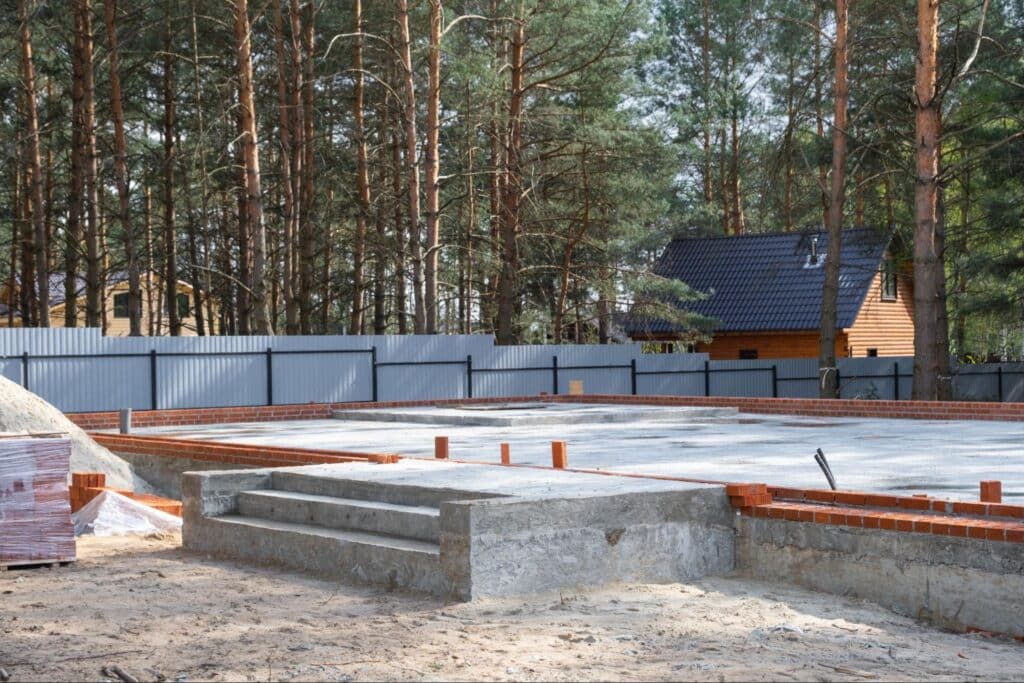Building a home is an exciting milestone, whether you’re creating a fully custom layout or selecting a semi-custom floor plan tailored to your needs. One of the key decisions in this process is choosing the right foundation, especially if you’re building in regions like Southern Indiana or Eastern Illinois, where slab foundations are often popular due to their practical benefits and, in some areas, favorable ground conditions.
This guide explores the essential aspects of slab foundations, comparing them to alternatives like crawl spaces and basements. From cost and construction speed to climate considerations and repair challenges, we’ll provide the clear, balanced insights you need to decide if a slab foundation is the right choice for your new home in Southern Indiana or Eastern Illinois.
What Is a Slab Foundation?
A look at concrete foundation types reveals that a slab foundation is one of the simplest and most common options. It consists of a single, solid layer of concrete poured directly onto a prepared surface at ground level, often four to eight inches thick. Reinforcing materials like steel rebar are used beneath load-bearing walls to boost stability.
Site preparation is critical: builders typically clear, level, and compact the ground, then add gravel for drainage and a moisture barrier to deter water vapor. After that, concrete is poured and given time to cure, creating a robust foundation. While flat, stable soil in certain parts of Southern Indiana can favor a slab, more clay-heavy zones may need extra steps or alternative solutions.
When carried out correctly—and under suitable soil conditions—a slab foundation can be a cost-effective, low-maintenance base for your new home. As illustrated in the Florida building guide on slab foundations, solid design and good drainage can lead to long-term stability.
Advantages of Slab Foundations
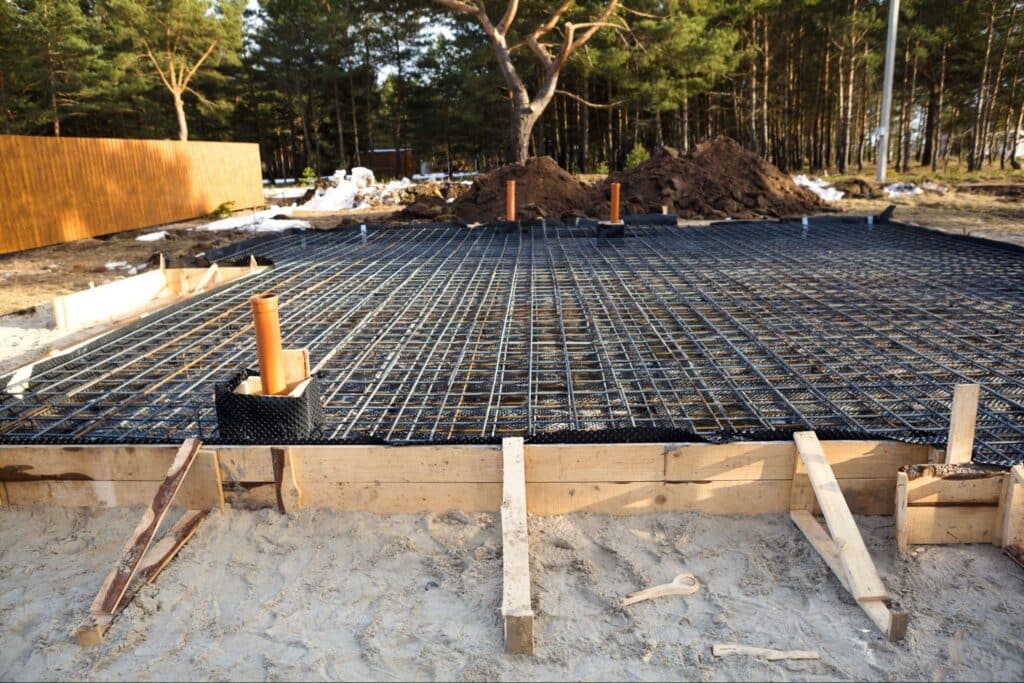
Understanding the benefits of slab foundations highlights why they’re popular among new homebuilders in Southern Indiana and Eastern Illinois. Below are the key advantages:
Cost-Effective Option
Slab foundations generally require minimal excavation and fewer materials compared to basements or crawl spaces, making them one of the most affordable foundation types. The straightforward design often leads to fewer labor hours and lowered long-term maintenance expenses—an appealing feature if you’re also considering the budget aspects of your overall home project.
Faster Construction Timeline
Speed is another advantage of slab foundations. With no need for deep excavation, the foundation process—site preparation, concrete pouring, and curing—moves along quickly. This means builders can begin framing sooner, helping you transition to the finishing stages of construction more rapidly.
Lower Risks of Mold, Mildew, or Pests
Because slab foundations eliminate the empty spaces found under crawl-space or basement constructions, there are fewer areas for moisture and humidity to accumulate. This design reduces the likelihood of mold, mildew, or common pests nesting in unseen cavities.
Energy Efficiency
In areas with moderate winters, the concrete mass of a slab foundation can help moderate indoor temperatures by retaining heat in cooler weather and staying cool in summer. When paired with good perimeter insulation, this can lead to noticeable energy savings over time.
Stability in the Right Conditions
With stable, well-draining soil, slab foundations can offer excellent structural integrity. Southern Indiana’s flatter terrain often suits such a design, though it’s crucial to confirm soil type and compaction levels. Referencing tools like the USDA Web Soil Survey can help you learn more about local soil conditions and suitability for a slab.
Disadvantages of Slab Foundations
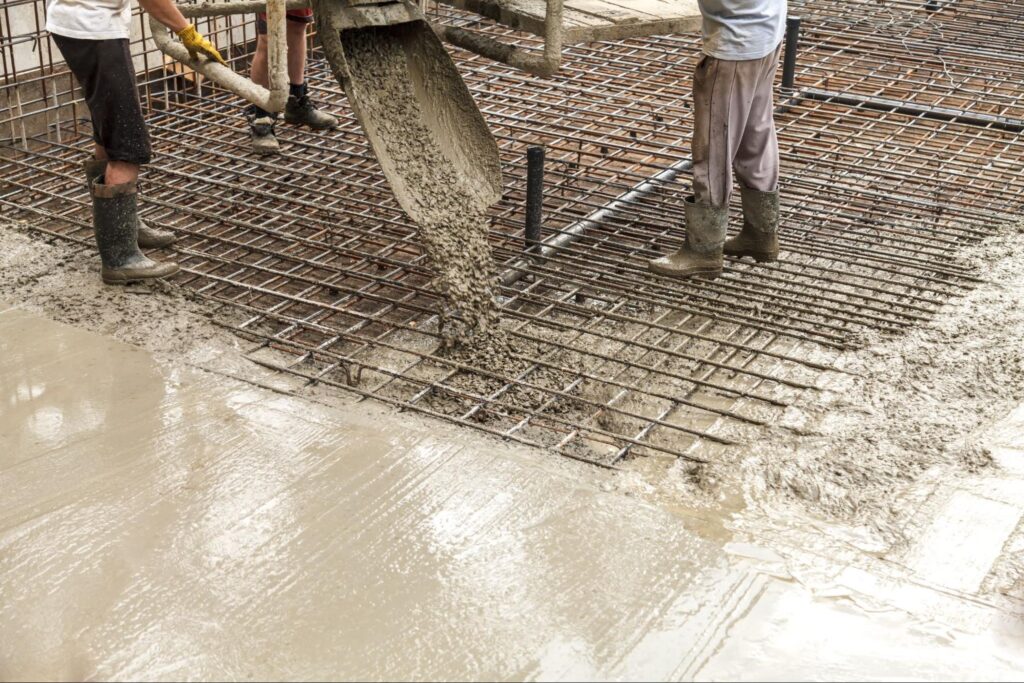
While slab foundations have many merits, it’s important to be aware of their potential downsides:
Vulnerability to Cracking and Soil Shifts
Over time, shifting or settling soil can cause cracks in the concrete. Factors such as improper compaction, excessive moisture, or freeze-thaw cycles can exacerbate these problems. Repeated freeze-thaw can be especially concerning if not properly mitigated.
Difficulty with Utility Repairs
Since the plumbing, electrical conduits, and other utilities may be embedded in or beneath the slab, accessing them for repairs can be a challenge. Fixes often involve breaking into the concrete, resulting in more extensive and expensive work compared to homes with accessible crawl spaces or basements.
Challenges in Extreme Climates
Homes in regions with severe seasonal temperature shifts may find slab foundations more susceptible to soil expansion or contraction. While proper insulation around the foundation perimeter can reduce these effects, it’s still wise to examine local climate records before you commit.
Limited Storage and Living Space
Because slab foundations don’t include an under-home area, there’s no extra storage or potential living area beneath your floors. If you need substantial storage or plan to finish a basement in the future, other foundation types might be better suited for your long-term goals.
Questions to Ask Your Homebuilder About Slab Foundations
Having a foundation that matches your needs and local conditions is paramount. To make the best decision, ask the following:
1. How Will the Site Be Prepared?
Inquire about soil testing, grading, and drainage plans. Proper site preparation reduces the odds of cracking or excessive moisture down the line.
2. What Materials and Techniques Will Be Used?
Get clarity on the type of concrete mix, how it’s reinforced, and the moisture barriers used. Each will impact the foundation’s durability.
3. Is a Slab Foundation Suitable for My Lot and Home Design?
Ask if your builder believes a slab is optimal for your property’s soil type, drainage, and elevation. Their regional expertise can guide your final decision.
4. What Support or Warranty is Offered for Foundation Issues?
Learn about the warranty covering foundation workmanship and materials. Prompt, reliable support helps protect your investment in the long run.
Alternatives to Slab Foundations: A Comparison
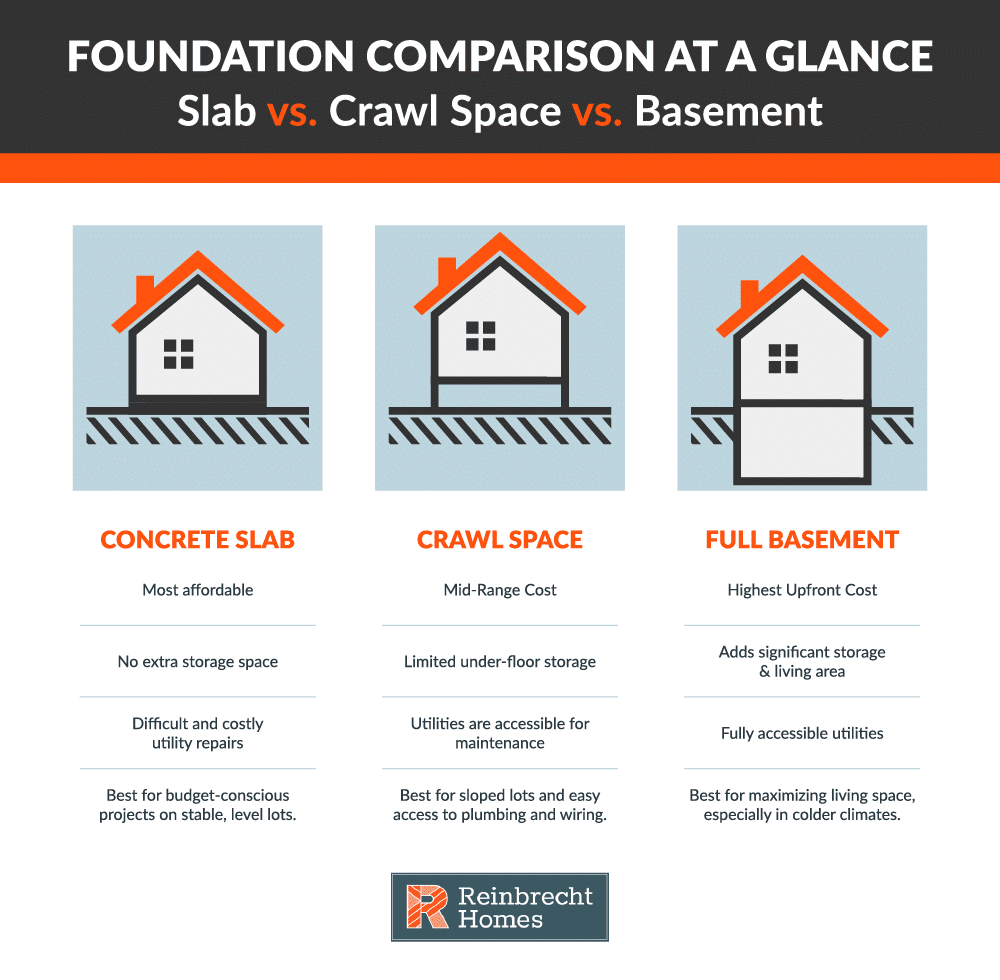
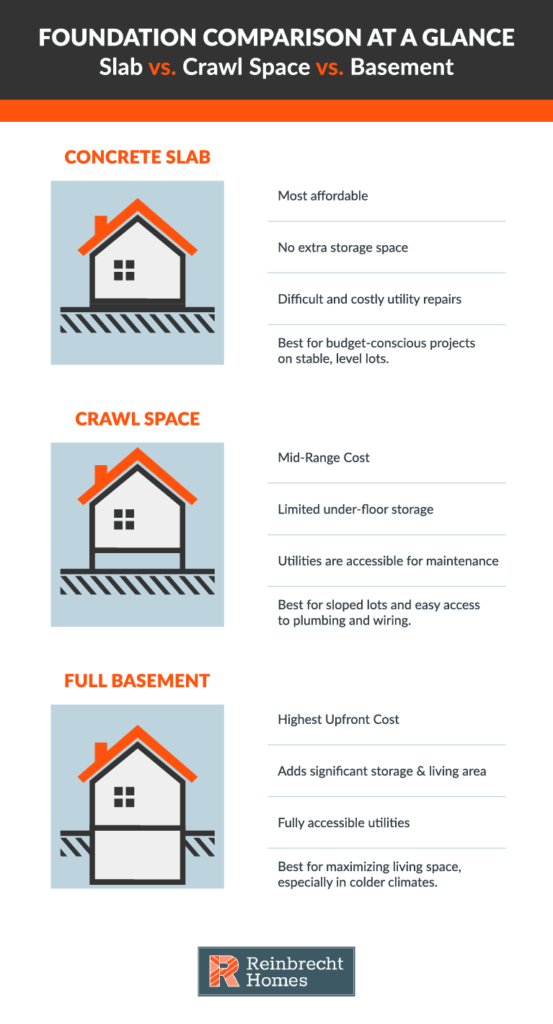
Some homeowners opt for other foundation types, depending on factors like climate or extra space requirements:
Crawl Space Foundations
Crawl spaces allow for easier access to utilities and can serve as limited storage areas. However, they demand careful moisture control, ventilation, and insulation.
Full Basement Foundations
Basements provide considerable storage and living space potential. They can enhance insulation in colder regions but require higher upfront costs and thorough waterproofing efforts.
Making the Right Choice for Your Home’s Foundation
Choosing a foundation is about balancing your priorities. A slab foundation offers an excellent solution if you value affordability, faster construction, and lower risks of moisture and pests. However, these benefits must be weighed against the potential for difficult utility repairs, limited storage space, and vulnerability to soil shifts if not expertly prepared.
Ultimately, the best foundation depends on your specific lot, your long-term goals, and your budget. At Reinbrecht Homes, our deep regional knowledge of Southern Indiana and Eastern Illinois means we don’t just build homes—we build them on the right foundation for lasting stability and value. We’ll help you assess your site’s soil conditions, understand the trade-offs, and make a confident decision.
If you’re ready to build your dream home on solid ground, contact our team today to begin the conversation.

